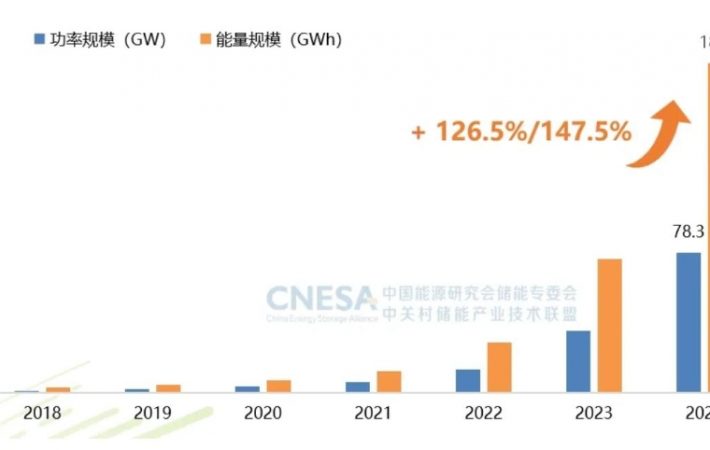A comprehensive transformation triggered by ESG is accelerating the reshaping of the energy business ecosystem.
At the 7th China Energy Communication Conference and ESG Brand Forum held recently, the first ESG ranking report focusing on energy listed companies in China, “The Power of Role Models: 2024 China Energy Listed Companies ESG 50 Report” (hereinafter referred to as the “ESG50 Report”), was officially released.
The China Industry News reporter learned that the ESG50 report was jointly released by Huaxia Energy Network and Shangdao Ronglv. 639 listed companies related to energy in the Shenwan industry category were selected as research objects. Based on the ESG rating results of Shangdao Ronglv in the third quarter of 2024, and considering multiple dimensions such as industry influence and public reputation, the top 50 companies with leading ESG comprehensive performance were finally selected.
2024 China Energy Listed Companies ESG 50 List
The 50 listed companies mainly cover four categories: wind and photovoltaic new energy (21), energy storage battery electric vehicles (9), oil, coal, and natural gas (7), and power equipment for power generation grids (13), with strong industry representativeness.
According to the rating results, the ESG performance of the top 50 companies has significantly improved compared to the previous year as a whole. Compared to the rating in 2023, 19 companies have upgraded their ratings, while the rest remain unchanged. Among the 50 companies on the list, a total of 17 have achieved A-level, accounting for over one-third.
Li Jing, Vice President and Sustainable Development Officer of JA Solar, one of the top 50 companies, stated that JA Solar has put forward the G2G sustainable development philosophy and established an ESG three-layer governance structure internally. In the 2030 and 2050 climate goals proposed by JA Solar, the total greenhouse gas emissions within the operating scope will be reduced by 42% compared to 2023 by 2030, and net zero greenhouse gas emissions will be achieved by 2050.
Tu Jianbang, Deputy General Manager of Securities Affairs Department of GCL Integrated, stated that ESG brings regulatory compliance risks, overseas trade risks, investment and financing cost risks, competition and brand risks to GCL Integrated. At the same time, it also brings opportunities for GCL Integration. Good ESG management can attract talent, expand markets, establish brand reputation, address climate change challenges, and achieve sustainable value and long-term development.
Comparing the five Wind indices of new energy, steel, mining, building materials, and coal, it can be found that although the average ESG score of the constituent stocks of the new energy index is higher than the other four traditional industry indices, the absolute difference is not significant. Traditional industry enterprises such as Zijin Mining, Baosteel Group, and China Shenhua have also received AA ratings due to their outstanding performance in ESG. ”Dong Deshang, the head of Wind ESG rating at Wande, analyzed.
ESG comprehensively evaluates the sustainable development of enterprises from three dimensions: environmental, social, and corporate governance.
The ESG50 report released the overall ESG performance of Chinese energy listed companies. In 2024, the average ESG score of listed companies in the energy industry is 56.65 points, higher than the average score of 53.83 points for all A-shares during the same period. From the perspective of ESG performance improvement, the average ESG score of listed companies in the energy industry has increased by 5.71% compared to 2023, higher than the growth rate of all A-shares (4.53%) and the Shanghai and Shenzhen 300 (5.58%) during the same period.

Comparison of ESG Average Scores in the Energy Industry (Data Source: Shangdao Ronglv)
In addition, from the perspectives of environment, society, and governance, the average ESG scores of energy listed companies are also higher than the average level of all A-shares. From the perspective of sub topics, the average ESG scores of energy listed companies are mostly higher than the average scores of all A-shares. Especially in terms of product management, the average score of listed companies in the energy industry is 69.2, which is not only higher than the average score of all A-shares, but also higher than the average score of the Shanghai and Shenzhen 300.
However, compared to the average score of 66.05 in the Shanghai and Shenzhen 300, there is still a certain gap for energy listed companies. Specifically, energy listed companies still have certain gaps compared to the Shanghai and Shenzhen 300 in terms of environmental policies, energy and resource consumption, pollutant emissions, climate change response, employee development, supply chain management, community, business ethics, and compliance management. This means that there is still significant room for improvement in ESG in the energy industry, and it requires joint efforts from the entire industry.
Faced with various challenges, China’s new energy needs to continue to strengthen itself without interference, keeping in mind that ‘development is the hard truth’; at the same time, it should also follow the trend, integrate into the international community, and use ESG as a lever to tell the story of China’s energy. We should adhere to sustainable development and be practitioners of ‘long termism’; Aligning with global ESG standards and becoming a qualified citizen of the international community; Integrate locally and internationally, and become a disseminator of Chinese brands and civilization. ”Zhang Yuqing, former member of the Party Group and Deputy Director of the National Energy Administration, suggested.
Chai Qimin, Director of the Strategic Planning Department of the National Climate Strategy Center, also admitted that the ESG concept coincides with China’s green and low-carbon development concept. Currently, ESG in China is in a stage of rapid development from the beginning. The current problems in the field of new energy are not resource related, but largely institutional and structural issues. Only by innovating systems and reforming mechanisms can we ensure the high-quality development of the new energy industry and make it a competitive industry on a global scale.





Leave a comment
Your email address will not be published. Required fields are marked *